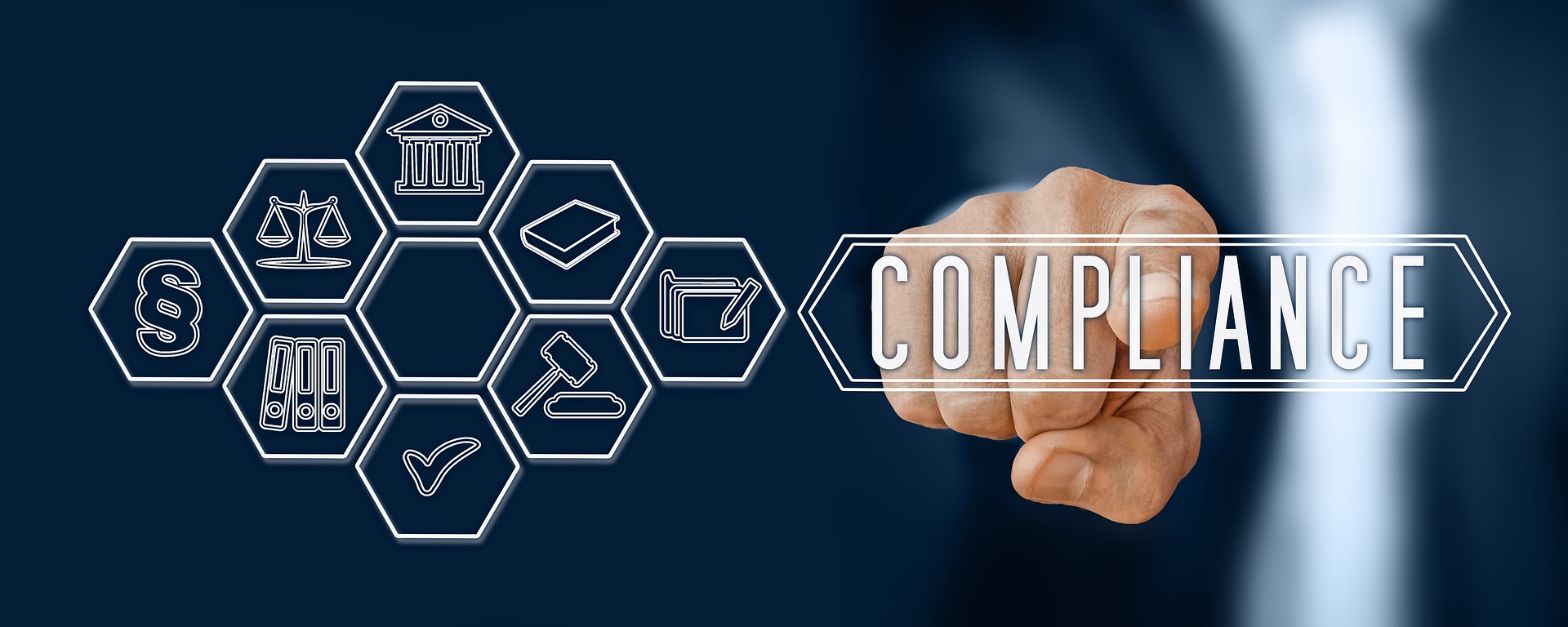4th Anti-Money Laundering Directive (4AMLD)
“The 4th Anti-Money Laundering Directive (4AMLD) is a critical tool in the fight against money laundering and terrorist financing. ” – Koen Geens, former Belgian Minister of Justice
 Written by Erling Andersen
Written by Erling Andersen
Definition
The 4th Anti-Money Laundering Directive (4AMLD) is a European Union directive that adopted in May 2015. It sets out rules and regulations for preventing money laundering and terrorist financing in the EU.
The 4AMLD aims to improve the existing AML framework in the EU and strengthen the fight against money laundering! and terrorist financing. It outlines the obligations of financial institutions and other designated entities to identify and assess the risks of money laundering! and terrorist financing, as well as the measures they should take to prevent these activities.
History
In May 2015, the 4th Anti-Money Laundering Directive (4AMLD) adopted by the European Union. It introduced in response to new and emerging threats to the EU’s financial system, such as the rise of new payment methods and the increasing use of digital currencies.
The 4AMLD builds on the previous three EU Directives on AML, which were implemented in 1991, 2001, and 2005. These directives aimed to prevent money laundering! and terrorist financing by establishing rules and regulations for financial institutions and other designated entities.
The 4AMLD introduced several new measures to strengthen the EU’s AML framework. One key provision was the requirement for Member States to maintain central registers of beneficial ownership information for companies and other legal entities. This information must be made available to competent authorities. Also financial intelligence units, and obliged entities.
“Money laundering is a global problem that requires a global solution. The 4th Anti-Money Laundering Directive (4AMLD) is an important step in the right direction, but we must continue to work together to prevent financial crime and protect our economies from the harmful effects of money laundering and terrorist financing.” – Valdis Dombrovskis, former Vice-President of the European Commission
The scope of AML obligations was also expanded to include virtual currency exchanges and wallet providers. These entities now required to comply with the same AML regulations as traditional financial institutions.
The 4AMLD also introduced Enhanced Due Diligence (EDD) measures for high-risk customers, such as Politically Exposed Persons (PEPs). Financial institutions and other designated entities must now conduct ongoing risk assessments to identify and assess the risks of money laundering! and terrorist financing.
In addition, the 4AMLD requires financial institutions and other designated entities to report suspicious transactions to the relevant authorities. This intended to help identify and prevent money laundering! and terrorist financing activities.
Overall, the 4th Anti-Money Laundering Directive (4AMLD) introduced to strengthen the EU’s AML framework and prevent money laundering! and terrorist financing. It builds on the previous three EU Directives on AML and introduces several new measures, including the requirement for central registers of beneficial ownership information and the expansion of AML obligations to virtual currency exchanges and wallet providers. These measures aim to help financial institutions and other designated entities comply with their AML obligations and prevent criminal activity.

Practical Examples
Financial institutions and other designated entities can take several practical measures to comply with the provisions of the 4th Anti-Money Laundering Directive (4AMLD). Here are some examples:
- Conduct ongoing risk assessments: Financial institutions and other designated entities should conduct regular risk assessments to identify and assess the risks of money laundering! and terrorist financing. This can involve analyzing customer data. Also transaction data, and other relevant information to identify potential risks.
- Implement enhanced customer due diligence measures: Financial institutions and other designated entities should implement enhanced due diligence measures for high-risk customers, such as Politically Exposed Persons (PEPs). This can involve conducting more thorough background checks and obtaining additional documentation to verify the customer’s identity and source of funds.
- Monitor transactions and activities: Financial institutions and other designated entities should monitor transactions and activities to detect suspicious! activity. This can involve using automated transaction monitoring systems to flag transactions that are unusual or inconsistent with the customer’s profile.
“The 4th Anti-Money Laundering Directive (4AMLD) is a critical tool in the fight against money laundering and terrorist financing. ” – Koen Geens, former Belgian Minister of Justice
- Report suspicious transactions: Financial institutions and other designated entities should report suspicious! transactions to the relevant authorities. This can involve submitting Suspicious !Transaction Reports (STRs) to financial intelligence units (FIUs) or other competent authorities.
- Train staff and raise awareness: Financial institutions and other designated entities should provide regular training to staff on AML policies and procedures. This can help to raise awareness of the risks of money laundering! and terrorist financing and ensure that staff equipped to identify and report suspicious activity.
By implementing these practical measures, financial institutions and other designated entities can help to comply with the provisions of the 4AMLD and prevent money laundering! and terrorist financing activities.

Statistics
The 4th Anti-Money Laundering Directive (4AMLD) has a significant impact on the fight against money laundering and terrorist financing in the European Union. Here are some statistics related to the 4AMLD:
- Cost of money laundering: According to the European Commission, the cost of money laundering! in the EU estimated to be between 0.7% and 1.3% of the EU’s GDP, or between €109 billion! and €206 billion! per year.
- Number of suspicious transactions reported: In 2018, the European Banking Authority (EBA) reported that EU financial institutions reported over 1 million suspicious! transactions under the 4AMLD.
- Number of beneficial ownership registers: As of 2021, all EU Member States required to maintain central registers of beneficial ownership information for companies and other legal entities under the 4AMLD. These registers intended to improve transparency and facilitate the identification of beneficial owners.
“By improving transparency and strengthening AML regulations, we can prevent criminals from exploiting our financial system and protect the integrity of our economies.” – Koen Geens, former Belgian Minister of Justice
- Number of virtual currency exchanges and wallet providers: The 4AMLD expanded the scope of AML obligations to include virtual currency exchanges and wallet providers. As of 2021, these entities required to comply with the same AML regulations as traditional financial institutions.
- Number of fines and sanctions: Several EU Member States have imposed fines and sanctions on financial institutions and other designated entities for AML violations under the 4AMLD. For example, in 2020, the Dutch central bank fined ING Bank €775 million! for failing to prevent money laundering! and terrorist financing.
These statistics highlight the importance of the 4th Anti-Money Laundering Directive (4AMLD) in preventing money laundering! and terrorist financing in the European Union. By complying with the provisions of the 4AMLD, financial institutions and other designated entities can help to protect the integrity of the EU’s financial system and prevent criminal activity.

Incidents
There are several high-profile incidents of money laundering! that have highlighted the importance of the 4th Anti-Money Laundering Directive (4AMLD) in preventing financial crime. Here are some examples:
- Danske Bank money laundering scandal: In 2018, Danske Bank’s Estonian branch implicated in a money laundering scandal involving the laundering of billions! of dollars of criminal proceeds. The scandal led to investigations by several regulatory authorities and resulted in the resignation of the bank’s CEO.
- FBME Bank scandal: In 2014, the US Department of the Treasury designated FBME Bank as a “primary money laundering concern” due to its alleged involvement in money laundering! and terrorist financing activities. The bank subsequently placed under administration and its license revoked.
- Troika Laundromat scandal: In 2019, the Organized Crime and Corruption Reporting Project (OCCRP) revealed the existence of the Troika Laundromat, a money laundering scheme involving the laundering of over $8 billion! in Russian funds. The scheme involved a network of shell companies and used to finance luxury goods purchases and other high-end expenses.
These incidents demonstrate the importance of strong AML regulations, such as the 4th Anti-Money Laundering Directive (4AMLD), in preventing money laundering and terrorist financing activities. By complying with the provisions of the 4AMLD, financial institutions and other designated entities can help to prevent criminal activity and protect the integrity of the financial system.

The Future
The 4th Anti-Money Laundering Directive (4AMLD) is an important piece of legislation that has helped to strengthen the EU’s AML framework and prevent money laundering and terrorist financing. However, as the threat of financial crime continues to evolve, it is likely that further updates to the AML framework will be required in the future. Here are some possible future developments related to the 4AMLD:
- The 5th Anti-Money Laundering Directive (5AMLD): As we already talk about in the article of The Evolution of KYC and AML Regulations: From 4AMLD to 5AMLD , The EU has already introduced the 5th Anti-Money Laundering Directive (5AMLD). It came into force in January 2020. The 5AMLD builds on the provisions of the 4AMLD and introduces new measures. It such as the requirement for Member States to establish beneficial ownership registers for trusts. Also similar legal arrangements.
- Increased use of technology: As criminals become more sophisticated in their use of technology to launder money, it is likely that the AML framework will need to keep pace with these developments. This could involve the use of more advanced technologies, such as artificial intelligence. Also machine learning, to detect suspicious! activity.
- Greater international cooperation: Money laundering! is a global problem, and it will be important for the EU to work closely with other countries and international organizations to prevent financial crime. This could involve greater cooperation between FIUs and other regulatory authorities, as well as the sharing of information and best practices.
- Focus on emerging risks: As new payment methods and technologies emerge, such as cryptocurrencies. Also decentralized finance (DeFi), it will be important for the AML framework to adapt to these new risks. This could involve the introduction of new regulations and guidance to address the unique risks posed by these emerging technologies.
“The 4th Anti-Money Laundering Directive (4AMLD) represents a significant step forward in the fight against money laundering and terrorist financing. However, we must remain vigilant and continue to adapt to new threats and emerging risks if we are to effectively combat financial crime.” – EBA Executive Director, Adam Farkas
Overall, the 4th Anti-Money Laundering Directive (4AMLD) is an important step in the fight against money laundering! and terrorist financing in the EU. However, as the threat of financial crime continues to evolve, it is likely that further updates to the AML framework will be required in the future. By staying ahead of these developments and adapting to new risks, the EU can continue to protect the integrity of its financial system and prevent criminal activity.
Explore the power of Kyros AML Data Suite
It is a powerful software solution that designed to help financial institutions and other designated entities comply with Anti-Money Laundering! (AML) regulations, including the 4th Anti-Money Laundering Directive (4AMLD) in the European Union. The software uses advanced analytics and artificial intelligence to help identify and detect suspicious! activity, and can be used to conduct ongoing monitoring of customer transactions and activities.
First key features of Kyros AML Data Suite
It is its ability to help financial institutions and other designated entities comply with the enhanced due diligence requirements of the 4AMLD.
The software can be used to conduct more thorough background checks on high-risk customers, such as Politically Exposed Persons (PEPs). Also to verify the identity and source of funds of these customers.
In addition, Kyros AML Data Suite can help financial institutions and other designated entities comply with the requirement to report suspicious! transactions to the relevant authorities. The software can be used to generate Suspicious Transaction Reports (STRs) and other required documentation, and can assist with the submission of these reports to financial intelligence units (FIUs) or other competent authorities.
Second key feature of Kyros AML Data Suite
It is its ability to help financial institutions and other designated entities comply with the requirement to maintain central registers of beneficial ownership information for companies and other legal entities. The software can be used to collect and store beneficial ownership information, and can be integrated with other systems to facilitate the sharing of this information with relevant authorities and other obliged entities.
Overall, Kyros AML Data Suite is a powerful tool that can help financial institutions and other designated entities comply with the provisions of the 4th Anti-Money Laundering! Directive (4AMLD) in the European Union. By using advanced analytics and artificial intelligence to detect suspicious! activity and conduct ongoing monitoring of customer transactions and activities, the software can help to prevent money laundering! and terrorist financing activities and protect the integrity of the financial system.
Kyros AML Data Suite is a powerful tool for financial institutions and other designated entities seeking to comply with AML regulations. It uses advanced machine learning algorithms and big data analysis to identify potential money laundering activity and flag suspicious transactions. Explore the power of Kyros AML Data Suite! to stay ahead of the latest threats and protect your organization from the risks of financial crime.
Conclusion
The 4th Anti-Money Laundering Directive (4AMLD)! is an important piece of legislation that sets out rules and regulations for preventing money laundering! and terrorist financing in the EU. By complying with the provisions of the 4AMLD, financial institutions. And also other designated entities can help to protect the integrity of the EU’s financial system and prevent criminal activity.
Share article on

